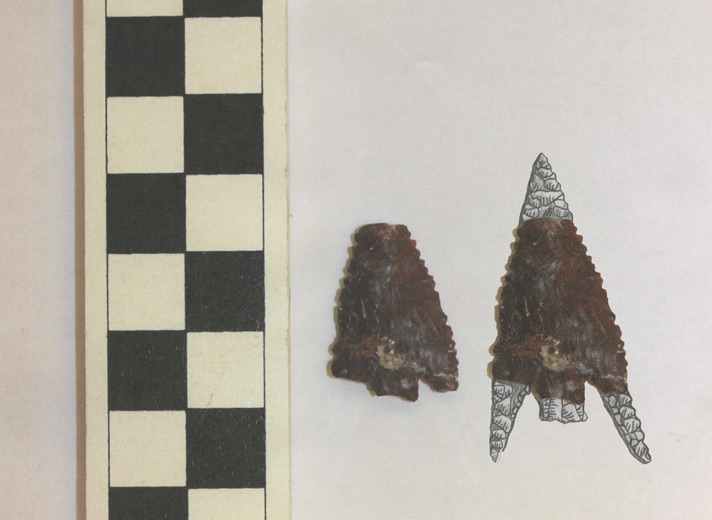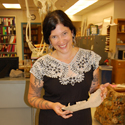Digging Jacksonville – October 2015
The Jacksonville area is a unique melting pot of Oregon’s historical past. Whether it’s the first timeworn photographs of Peter Britt or the earliest Chinese settlement in the Pacific Northwest, Jacksonville continues to be a must-see historical landmark. Often overlooked are Jacksonville’s original residents, who made homes here for over 10,000 years: the Native Americans. Traces of their lives have left a tangible record across the town. As an archaeologist here in Southern Oregon it is exciting to rediscover that record in the form of stunning stone tools and ornaments. Many objects were manufactured from materials ranging from polished basalts, to brown, red and yellow jaspers, to colorless opals. These stones were used to make everyday items like bowls and grinding stones, tools such as hand axes and knife blades, and for decorative ornamentation. The sources of these products were locally available to the native inhabitants, geologically originating out of the Western Cascades and depositing locally into Bear Creek and its tributaries throughout the Rogue valley. In my view, the artifacts of Native American traditions are equally as appealing in their esthetic and utilitarian purposes as an imported Chinese porcelain plate might be to the antique collector.
While excavating within Jacksonville’s Chinese Quarter and famed Britt Gardens, SOULA recovered several Native American artifacts mixed within the historical deposits. One such item was the jasper ‘Gunther Series’ broken projectile point in the image below. Though usually small in size, these arrowheads are found here in Southern Oregon and Northern California, and are recognizable in their distinct straight and often serrated edges complimented by pronounced barbs. Gunther series points date from within the Late Holocene period from 1,700 years ago to the historic era; putting people here in the Jacksonville area for nearly two thousand years!
Points like this one represent arrows used for hunting. Despite their size, the elongated barbed corners could pack a devastating blow to even the biggest of game animals. These projectiles would have been reused when possible, and the larger tools would have been reduced down from broken tools into smaller points as a way to make the most out of a high-quality piece of rock. So what is such an old artifact doing mixed in with the Chinese Quarter artifacts? There are several potential ways it could have reached the site: it might have been imported to the site after the 1888 fire when fill dirt was brought in to extend Main Street, or the projectile point could have been dropped long before the Chinese even arrived in Jacksonville. Despite the 150 years of mining, plowing, construction, (and even arrowhead collecting), archaeology still reminds us of Southern Oregon’s long and storied past.
Even the smallest of artifacts can provide big information for learning how people have shaped materials from the environment and how the environment shaped them. The opportunity to study Native American artifacts such as this one contributes to our ongoing efforts to explore the rich and dynamic history of Jacksonville.
Andrew Bastier is an Anthropology graduate from the University of Hawaii with archaeology experience throughout the Western United States. He joined the SOULA team in March of 2014 contributing to multiple projects in the Jacksonville area including the Britt Gardens Renovation Project and Hanley Farm Excavation. Andrew’s major interest includes replicating prehistoric technologies.
Featured image caption: This image shows a chert projectile point, with an illustration on the right to show what the point would have looked like before it was broken (scale in centimeters).


 Chelsea Rose is an historical archaeologist who specializes in the settlement and development of the American West. Chelsea and the Southern Oregon University Laboratory of Anthropology (SOULA) conduct archaeology across Oregon and have done several projects in Jacksonville. You can reach Chelsea at rosec@sou.edu and follow SOULA on
Chelsea Rose is an historical archaeologist who specializes in the settlement and development of the American West. Chelsea and the Southern Oregon University Laboratory of Anthropology (SOULA) conduct archaeology across Oregon and have done several projects in Jacksonville. You can reach Chelsea at rosec@sou.edu and follow SOULA on